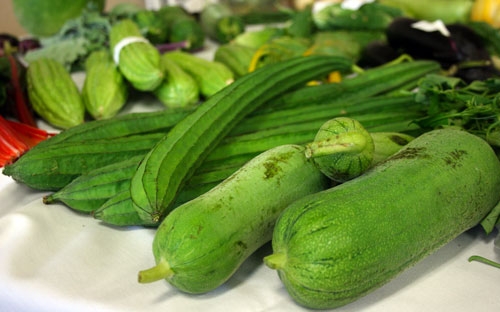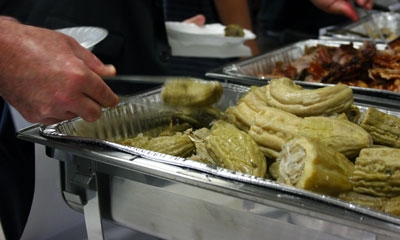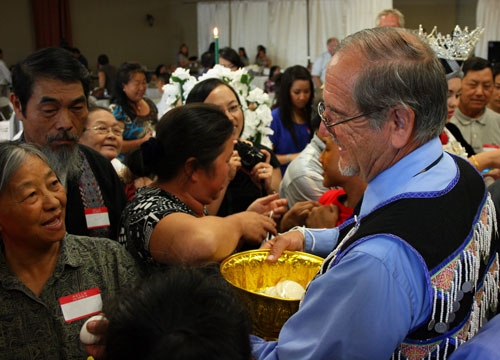Posts Tagged: Asian vegetables
Put down that zucchini! Pick up the ... bittermelon?
Welcome to August. Are you tired of summer squash yet?
If your dinners have been overflowing with zucchini recently (like mine have), now might be a great time to try new varieties of otherwise familiar vegetables.
One of the farm advisors I work with has long touted some varieties of "Asian vegetables" as more flavorful than their traditionally "American" cousins. Here in the U.S., vegetable varieties like these are more likely to be grown by farmers — and sold to customers — who have close ties to Asian immigrant communities. Richard Molinar, UC Cooperative Extension farm advisor for Fresno County, works frequently with Hmong farmers and says that he now prefers Hmong cucumber and Japanese eggplant to the varieties you might find in most California supermarkets.
After years of hearing Molinar's claims, I finally had a chance to try some of these new-to-me Asian vegetables during lunch at the Hmong Specialty Crops and Medicinal Herbs conference.
Presenters in the morning talked about crops such as sinqua, luffa (photo above has fresh luffa, in angled and smooth varieties), moqua, snake gourd, bittermelon and donqua — all of which are cucurbits, in the gourd family with other squashes and melons. Other Asian vegetables common in some specialty markets include leafy greens and tender shoots from chayote, amaranth, bittermelon, pumpkin, okra leaf, yam leaf, yucca and sour leaf plants. Discussions at the conference focused on these and other specialty crops, including ways to eat them.
"Maybe we need a recipe to teach customers how to buy these new crops," said Chukuo Thao, CEO of National Hmong American Farmers, who alternated between English and Hmong while speaking at the conference.
Some of the vegetables and herbs discussed at the conference were highlights of that day's lunch. The menu included a slushy Hmong cucumber drink, purple sticky rice, salsa made with cherry tomatoes, stir-fried mustard greens with pork skin, Hmong herbal chicken soup and steamed bittermelon stuffed with turkey.
But how did it taste? The stuffed bittermelon was what I was most looking forward to trying. The dish was delicious and wow, was it bitter! That is one appropriately named vegetable. Speakers at the conference suggested bitterness is frequently associated with medicinal qualities in Hmong cuisine.
Not all of the lunch dishes were bitter, of course. The cucumber dish was refreshing and very sweet, a dish with eggplant was spicy, and the mustard greens were salty and pungent. Many of the dishes were also made with lemongrass; Fresno County is where most of the nation's lemongrass comes from, according to Molinar in a recent article from the California Ag Network.
Curious about other Asian vegetables? Check out the Small Farm Program's guides to Asian vegetables, along with tips for farmers about how to grow and sell these niche varieties.
Question: The Small Farm Program has a lot of information about different vegetable varieties, but I'm still finding new vegetables to try. What are some of your favorite Asian vegetables?
P.S. While the conference was my first chance to taste bittermelon, Richard Molinar and Gus Schumacher (former USDA undersecretary) were being honored by Hmong community members for their long-time support of Southeast Asian refugee farmers. The two men were each given Hmong names in a special ceremony.




